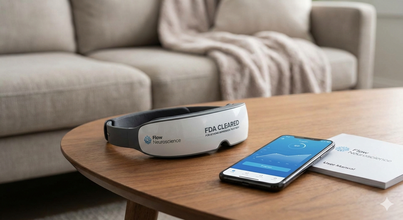- Health Conditions A-Z
- Health & Wellness
- Nutrition
- Fitness
- Health News
- Ayurveda
- Videos
- Medicine A-Z
- Parenting
What Is 'Make America Healthy Again' All About?

Credits: Instagram: Robert F Kennedy Jr. Casey Means, and Alex Clark
President-elect Donald Trump coined 'MAGA', the Make America Great Again movement. It is a political movement which was used heavily during the presidential campaigns in 2016 and 2024. The latest development is its conservative sub-brand 'MAHA', Make America Healthy Again, with many MAHA influencers jumping right into the campaign, re-imagining the food policies and warning Americans on what they should or should not consume.
The forefront of MAHA is Robert F Kenny Jr. (RFK Jr.), who was recently nominated by Trump as the US Health Secretary, the position that awaits Senate approval. This battle incorporates RFK Jr.'s struggle against corporate agriculture, pharmaceutical companies and medical establishments.
Background
The externalised cost of food-related, noncommunicable diseases for Americans is over $1.3 trillion per year. This is greater than the value of all groceries sold annually. The food industry is also reaping high profits dealing with ultra-processed foods, many of which are banned in many other countries.
Robyn O'Brien, Chief Operating Officer at Montcalm says that 1 in 2 American men are expected to get cancer in their lifetimes, while 1 in 3 American women can expect the same. 1 in 3 American children has four As, which stands for allergies, autism, ADHD, and asthma, along with cancer as the leading cause of death in American children.
In this backdrop, it is JFK Jr.'s MAHA who wants to "dismantle the corporate stranglehold on [read the] our government agencies that has led to widespread chronic disease, environmental degradation, and rampant public distrust...MAHA seeks to drive a transformative agenda. This includes prioritizing regenerative agriculture, preserving natural habitats, and eliminating toxins from our food, water, and air… to combat the chronic disease epidemic, which includes addressing the root causes such as poor diet, environmental toxins, and inadequate healthcare... and dismantling the corporate takeover of government agencies that are supposed to protect public health and the environment.”
How did MAHA begin?
Calley Means and Dr Casey Means, a brother-sister duo built a wellness empire by questioning some of the traditional medical expertise and vaccine mandates. Their ideas also spoke to Trump's MAHA movement.
Calley who is a former food-industry lobbyist and Casey, a Stanford-educated surgeon, have pushed for a revamp of the American food and health system. This is driven by a deep distrust of the pharmaceutical and food industries and medical theories. Drawing on this thought, JFK Jr. also mentioned both siblings as people he would recommend to Trump for "prominent roles" in his administration.
The siblings have criticised the approach that the US medical systems are taking. They say, that instead of going for a holistic look at the body's needs through nutrition, exercise and health, the current medical system is relying on medications.
Calley also called the Covid-19 vaccine mandates a "war crime", and that parents should rely on the "divine gifts of intuition and heart intelligence" rather than "blindly trusting the science".
ALSO READ: Who is Robert F. Kennedy Jr., the Controversial Nominee for U.S. Health Secretary?
MAHA Influencers
There are MAHA influencers other than the podcaster siblings and JFK Jr. himself. Enters Alex Clark. "Cool girl, loves health and wellness, and happens to be conservative", the 31-year-old introduces herself.
She is able to tap into those who are not politically aligned, but are worried about their kids' health. In a podcast called Realfoodology, she and Courtney Swan, a nutritionist look for chickpeas, which might "slowly poison you", as Clark believes.
These chickpeas contain glyphosate, which as per the Environmental Protection Agency has "no risks of concern to human health". The Food and Drug Administration (FDA) noted that one international organisation said that it may be a carcinogen, but no other organisation has found or said anything. But for Clark, it does not matter because she has no faith in the "three-letter-agencies".
She in her podcast Culture Apothecary promoted MAHA, discussing various issues on health and wellness, with the top discussion on motherhood as a virtuous role, daycare as dangerous and feminism as insidious.
MAHA is a big no on hormonal birth control and she too is a promoter of the idea that the women's liberation movement has done more harm than good. Aligning with Republican's anti-abortion views, this MAHA influencer is a firm believer that abortion is "never medically necessary to save the life of the mother," even if the experts disagree.
What Else MAHA Wants?
MAHA is against regular mammogram testing because it exposes women to radiation and disrupts their body's function. As per the National Cancer Institute, the benefits of undergoing regular screenings exceed the risk of skipping them.
Another thing many MAHA believers hold deeply close to is that "my body, my choice" is just an illusion created by the state. In reality, the body is controlled by medicines, which leads to autism in children. The popular belief is that the food Americans eat, controlled by the corporation is what makes them sick, and they seek medical help, which controls their brain. It is a vicious cycle and MAHA wants to break free.
MAHA does not want these government agencies to co-parent their kids. They are clear that they want a "divorce", as Clark says.
With JFK Jr. being nominated as the US Health Secretary, who could control the health agencies, including the Centers for Disease Control and Prevention (CDC), the Food and Drug Administration (FDA), the National Institutes of Health (NIH), and many more, MAHA could be a dream come true in "divorcing" the parents with the government.
Ozempic Launches In India At Rs 2,200 For Starter Dose: All You Need To Know

Credits: Canva
Danish drugmaker Novo Nordisk has officially introduced its widely known diabetes medication Ozempic in India, pricing the starter dose of 0.25 mg at ₹2,200 per week. According to a Reuters report, the injectable medicine will be available in three strengths in the country: 0.25 mg, 0.5 mg and 1 mg.
Ozempic is a once-weekly injectable prescribed for people living with type 2 diabetes.
Ozempic Price In India
The weekly injection received approval from the US Food and Drug Administration in 2017 for treating type 2 diabetes. Since then, it has grown into a global blockbuster and is also commonly prescribed off-label for weight loss because of its appetite-suppressing effects.
The lowest strength will cost ₹2,200 per week. Prices for the higher doses have also been announced, as per the Reuters report.
Here are the details:
- 1 mg dose: ₹11,175/month
- 0.5 mg dose: ₹10,170/month
- 0.25 mg dose: ₹8,800/month
All you need To know About Ozempic
India’s drug regulator, the Central Drugs Standard Control Organisation (CDSCO), approved Ozempic, also known as semaglutide, in October this year for adults with type 2 diabetes.
As per the US FDA, Ozempic is prescribed along with diet and exercise to improve blood sugar control in adults with type 2 diabetes mellitus. It is also indicated to reduce the risk of major cardiovascular events in adults with type 2 diabetes who already have heart disease.
As per NDTV Profit, currently, Wegovy is priced at Rs 2,712 per week for the 0.25 mg dose, while the 0.5 mg dose costs Rs 3,462 weekly. The 1 mg dose is also priced at Rs 3,462 per week, and the 1.7 mg dose is available at Rs 4,100 per week. Mounjaro (tirzepatide), a combination therapy of GLP-1 receptor agonist and GIP that helps improve blood sugar control in adults with type 2 diabetes when paired with a healthy diet and regular exercise, is priced at Rs 13,500 per month for the 2.5 mg dose.
How Does Ozempic Help In Weight Loss?
Ozempic mimics the action of a naturally occurring hormone called GLP-1. Here’s how it supports weight loss, as outlined in an earlier HT report.
- It boosts insulin release when blood sugar levels increase.
- It slows down the emptying of food from the stomach, helping people feel full for longer after meals.
- At higher doses, it can also curb appetite, which may aid weight management efforts.
Possible Side-Effects Of Ozempic
As previously reported by Mayo Clinic, some potential side-effects of Ozempic include:
- An increased risk of inflammation of the pancreas.
- Possible gallbladder-related problems.
- According to the FDA, the most commonly reported side effects, seen in at least 5 per cent of patients taking Ozempic, include nausea, vomiting, diarrhoea, abdominal pain and constipation.
This article is intended for informational purposes only and should not be taken as a replacement for professional medical advice.
Delhi Air Quality Hits ‘Severe,’ GRAP-3 Curbs Kick In: Full List Of Restrictions Explained

Credits: Canva
Anti-pollution measures under GRAP-3 came into force in Delhi on Saturday as air quality slipped into the “severe” bracket. By noon, the national capital reported an Air Quality Index of 405, according to figures released by the Central Pollution Control Board (CPCB). Earlier in the day, Delhi’s AQI hovered close to 390 during the morning hours.
Delhi Air Quality Hits ‘Severe'
Each winter, Delhi and the surrounding NCR (National Capital Region) bring in curbs under the Graded Response Action Plan, which divides air quality into four levels: Stage 1 (Poor, AQI 201–300), Stage 2 (Very Poor, AQI 301–400), Stage 3 (Severe, AQI 401–450) and Stage 4 (Severe Plus, AQI above 450).
Under GRAP-3, non-essential construction and demolition activities have been halted, along with stone crushing and mining operations. The measures also include restrictions on older diesel goods vehicles within Delhi. Schools up to Class 5 are required to move to a hybrid learning model, while offices across Delhi-NCR may function with only 50 per cent staff strength, as per Press Information Bureau.
Hazardous AQI levels have become a recurring feature across several parts of Delhi during the winter months. Quoting environmental experts, an IANS report linked the sharp decline in air quality to a mix of stagnant wind conditions, vehicle emissions, industrial pollution and seasonal factors such as crop residue burning in neighbouring states.
What Changed in GRAP?
The biggest shift under the updated GRAP framework is that stricter steps will now come into force earlier, instead of waiting for air quality to deteriorate further.
As per Press Information Bureau, under the revised system, measures that were earlier reserved for Stage 4 will now apply at Stage 3 itself. This means that once the AQI reaches the 301–400 range, public, municipal and private offices will function with only 50 percent staff. Central government offices will also move to work-from-home at this stage, rather than waiting for the AQI to cross 450.
In the same way, actions that earlier fell under Stage 3 have now been pushed to Stage 2. As a result, staggered timings for government offices will begin as soon as the AQI enters the 201–300 category.
Stage 2 measures have also been advanced to Stage 1. This brings uninterrupted power supply arrangements into effect earlier, at an AQI level of 101–200, to reduce the need for diesel generator use and limit additional emissions.
Delhi AQI: GRAP Stage 3 Restrictions Announced
In response to the worsening situation, the Delhi government confirmed that the Commission for Air Quality Management (CAQM) has activated all measures under Stage III of GRAP, which falls under the “Severe” air quality category with AQI levels between 401 and 450, across the entire NCR.
These Stage 3 curbs will apply in addition to the existing Stage I and Stage II measures. Authorities, including NCR Pollution Control Boards, have been instructed to step up enforcement to prevent further deterioration of air quality across the region.
- Ban on the transportation of construction materials such as sand and cement, particularly on non-paved roads
- Complete suspension of demolition and construction work unless unavoidable, including earthwork, piling and trenching
- Advisory for private firms to permit work-from-home or hybrid arrangements to reduce traffic-related pollution
- Restrictions on inter-state diesel buses entering or operating within Delhi
- Prohibition on BS-3 petrol and BS-4 diesel four-wheelers in Delhi and nearby NCR districts
- Shutdown of stone crushers, mining operations and hot-mix plants that do not run on clean fuel
- Ban on the use of diesel generator sets, except for emergency and essential services
GRAP III Imposed in Delhi-NCR: What’s Allowed
Even as Stage III of the Graded Response Action Plan comes into force, certain essential activities and services will continue to operate to minimise disruption to daily life.
- Essential infrastructure and public service projects permitted include:
- Metro, railway, airport, highway, defence, healthcare and sanitation-related projects
- Construction work linked to critical infrastructure, provided strict dust control and proper waste management norms are followed
- Vehicles used by persons with disabilities
- Recommended measures under GRAP III include:
- Greater use of public transport to reduce private vehicle emissions
- Hybrid or online classes for students up to Grade 5 to limit outdoor exposure and traffic movement
US FDA Approves First At-Home Device To Treat Depression – Here’s What You Need To Know

The U.S. Food and Drug Administration has cleared an at-home brain stimulation headset developed by Flow Neuroscience to help treat depression, giving patients another option beyond standard antidepressant drugs, which many people struggle to stay on because of long-term side effects, the company announced on Thursday.
Rates of depression in the U.S. have climbed sharply, rising by about 60% over the past ten years and now affecting more than 20 million adults, according to data from the Centers for Disease Control and Prevention.
FDA Approves First At-Home Brain Stimulation Device For Treatment of Depression
The US Food and Drug Administration (FDA) has approved a home-use brain stimulation device designed to treat major depressive disorder in adults. The device, known as FL-100 and made by Flow Neuroscience, is the first at-home treatment of its kind to receive approval in the United States.
The FDA’s decision was supported by results from the Empower phase 2 clinical trial, which found that 58% of participants reached remission after 10 weeks of treatment. Flow Neuroscience also reported that among users worldwide, 77% noticed an improvement in symptoms within three weeks. To date, more than 55,000 patients have used the device in regions including Europe, the UK, Switzerland, and Hong Kong.
Brain Stimulation Device For Depression: How Will The Headset Work?
The prescription device, called FL-100, uses transcranial direct current stimulation to send a mild electrical current to the brain’s prefrontal cortex, an area involved in mood control and stress response. According to Flow, this part of the brain is often less active in people living with depression, a condition that affects over 20 million adults across the U.S.
Flow noted that roughly one in three people with depression does not respond adequately to antidepressant medications, and many others discontinue them because of unwanted side effects.
“Flow’s FDA approval marks a turning point in depression care, representing the first real move away from medication-only treatment toward technology-based therapies with fewer side effects,” said Flow CEO Erin Lee in a statement.
During the study, participants wore the headset for 30 minutes per session while resting, beginning with five sessions a week for the first three weeks, then reducing to three sessions per week for the rest of the trial. The program also included live remote monitoring through video calls.
Researchers observed benefits in patients who were already taking antidepressants for treatment-resistant depression or receiving psychotherapy, as well as in those who were not using medication at all.
“Among people using Flow in real-world settings, 77% report feeling better in as little as three weeks,” said Kultar Garcha, M.D., chief medical officer at Flow. “A treatment that was once limited to clinics can now be used at home, offering a practical way to widen access to effective depression care.”
Flow said it plans to launch the headset commercially in the U.S. in the second quarter of next year and intends to explore its potential use for conditions such as traumatic brain injury, addiction, and sleep disorders.
“We want Flow to become part of the standard pathway for treating depression,” Lee said. “Our focus is clear: to help as many people as possible reach remission and regain their quality of life.”
© 2024 Bennett, Coleman & Company Limited

